Cataract Surgery Procedure Safety, Recovery, and Effects
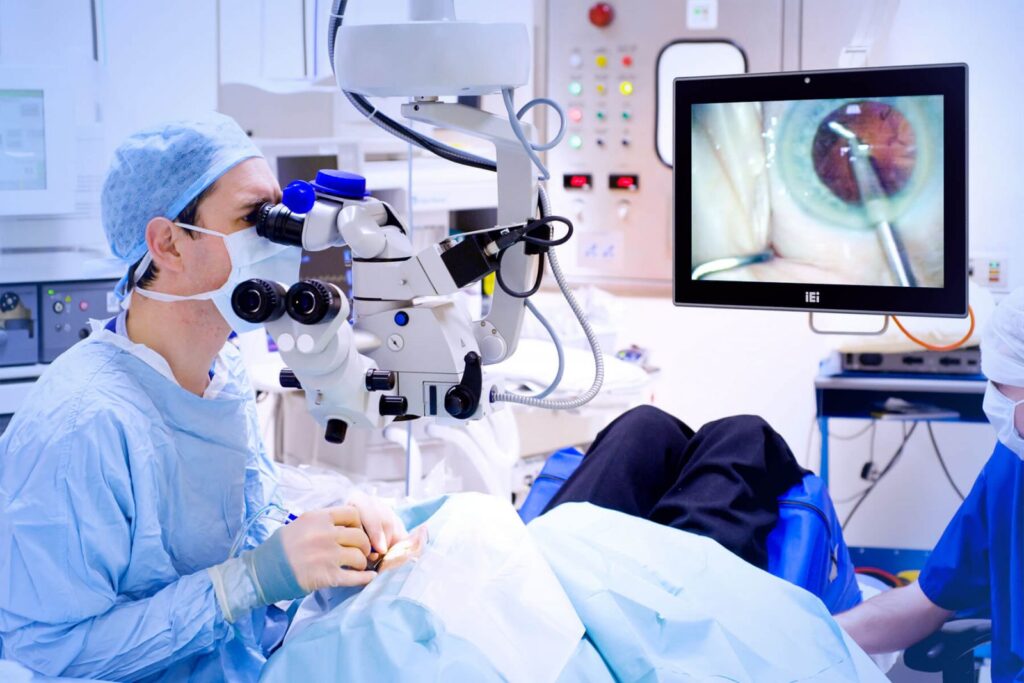
Getting Ready for Anesthesia for Cataract Surgery Axon Health Care
There is general consensus that cataract surgery is extremely low risk, and the benefits of sight restoration and preservation are enormous. We present the Society for Ambulatory Anesthesia (SAMBA) position statement for preoperative care for cataract surgery. More than 20 million cataract extractions are done worldwide yearly.
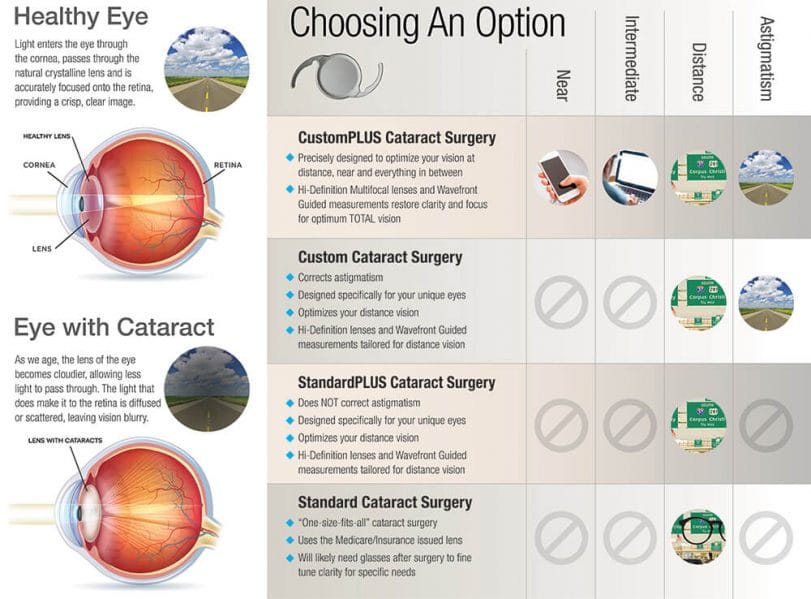
Cataract Surgery Cataracts Surgery Center Eye Associates
Surgery for age-related cataract is the highest volume surgical procedure performed on Medicare beneficiaries. Approximately 1.5 million surgeries were performed on this population in 1996. Cataract surgery is performed almost exclusively as an outpatient procedure. It usually involves the administration of a local anesthetic in addition to systemic sedation administered by an anesthesiologist.

A Look Inside the Entire Cataract Surgery Procedure [Surgical Footage
Cataract Surgery and Anesthesia Types. The majority of cataract surgeries performed in the U.S. are done with a local anesthetic and IV sedation. The local anesthesia may be accomplished in one of two ways: either an injection of anesthetic around the eye or anesthetic eye drops placed on the eye, often combined with an injection of a small.
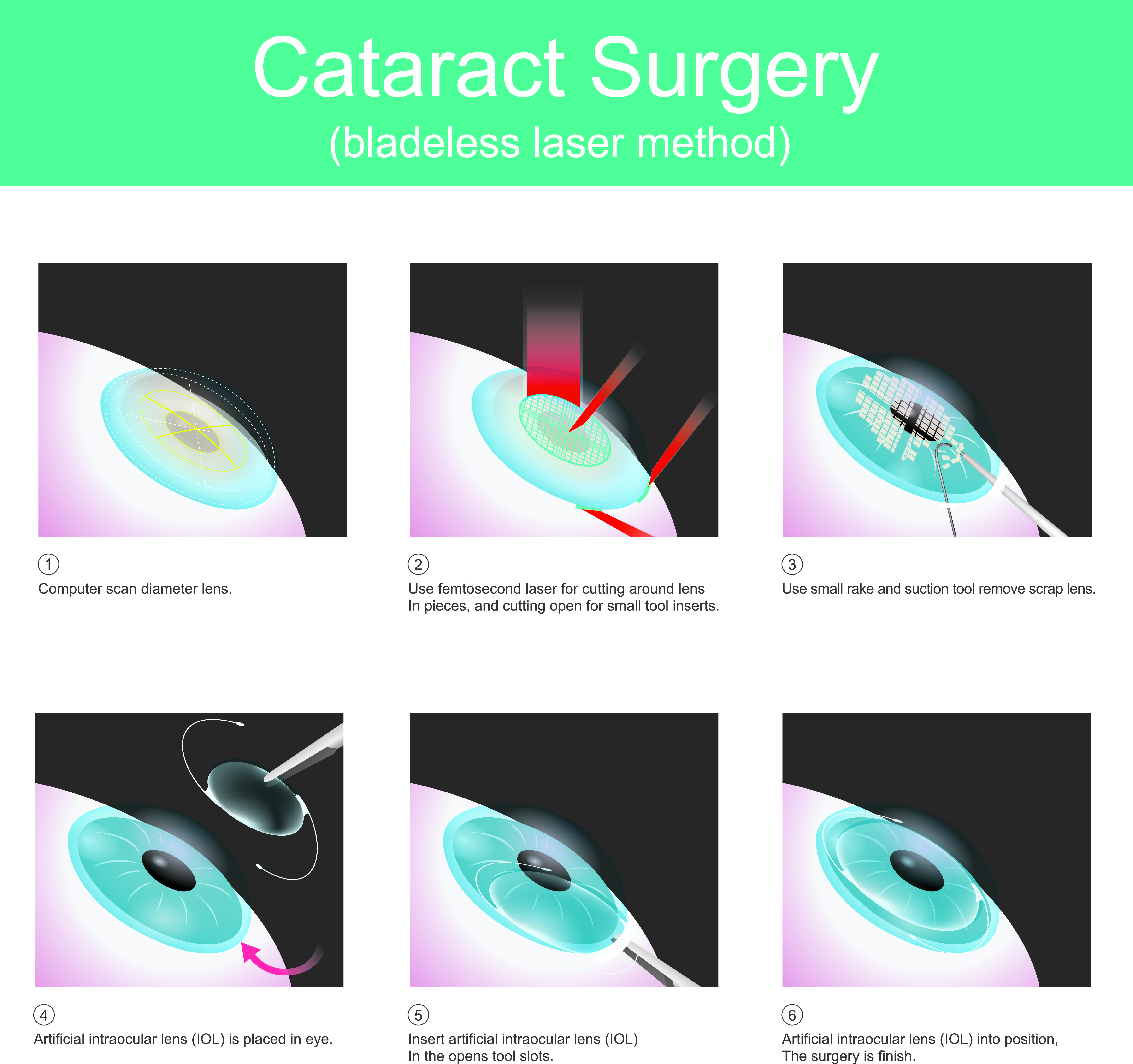
Explain Different Types of Cataract Surgery
Cataract and vitreoretinal surgeries are the most frequently performed intraocular surgical procedures.2,3§The increased prevalence of cataract extraction by phacoemulsification has led to decreased use of injection eye blocks and more use of topical anesthesia. Topical anesthesia is applied as drops or gels and may be supplemented by intracameral injection by the surgeon for better.
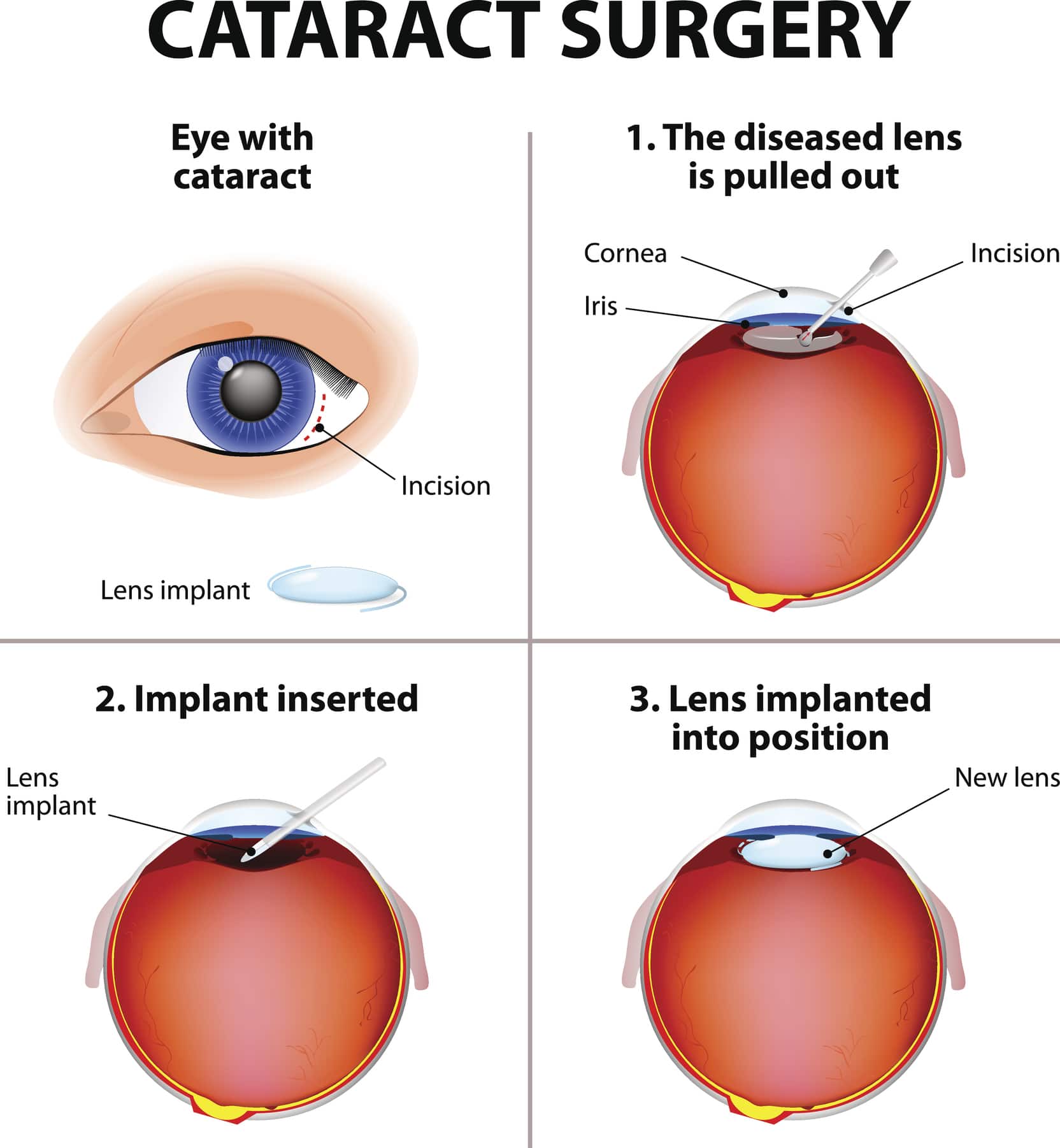
Cataract Surgery Portland OR The Eye Clinic P.C.
Topical Anesthesia. With advances in surgical technique and technology, cataract surgery has evolved into an almost painless procedure. Thanks to smaller incisions, phacoemulsification of the lens nucleus, foldable IOLs, and advanced techniques for cataract patients' rapid visual recovery without needing sutures or prolonged postoperative periods - plus using topical anesthetic instead of.

What types of cataract surgery are there? Lowcountry Eye Specialists
The IV sedation keeps the patient in a relaxed state as the eye doctor performs the procedure. The anesthetist stays in the room during the procedure to ensure the patient remains in that state the entire time. The process is known as MAC anesthesia, or monitored anesthesia care. The peaceful state patients are in is not a complete sedation.

Cataract Surgery Procedure Safety, Recovery, and Effects
Finally, your doctor will insert an artificial intraocular lens (IOL) to restore focus power in your eye allowing clear sight again. Your doctor will administer intravenous (IV) sedation to keep you comfortable and sleepy throughout the entire procedure, providing for a smoother recovery without the risks associated with general anesthesia.
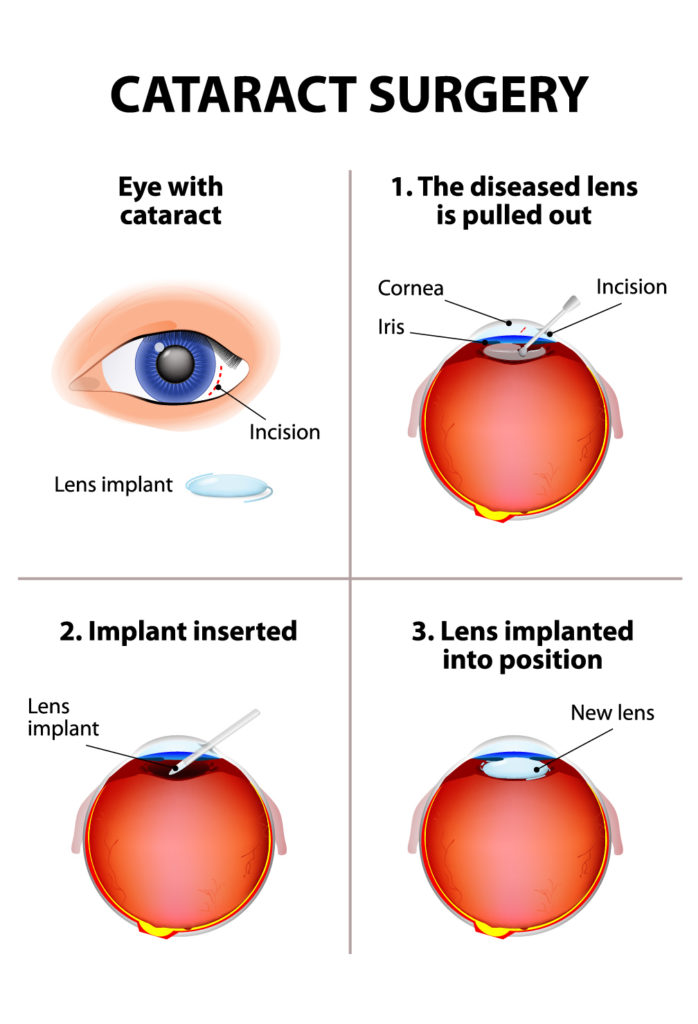
Cataract Surgery PghEyeMeds
Cataract surgery is a procedure to remove the lens of the eye and, in most cases, replace it with an artificial lens. A cataract causes the lens to become cloudy when it is typically clear. Cataracts can eventually affect vision. Cataract surgery is performed by an eye doctor, also called an ophthalmologist.

Cataract Surgery Procedure Safety, Recovery, and Effects
For surgeons, the mean satisfaction score was 5.11 ± 1.11 (range, 2.83-6) for oral sedation and 5.45 ± 0.78 (range, 3.4-6) for IV sedation. For anesthesia providers, those scores were 4.97 ± 1.10 (range, 2.17-6) for oral sedation and 5.35 ± 0.78 (range, 3-6) for IV sedation. Complications. The only major intraoperative complication, a.
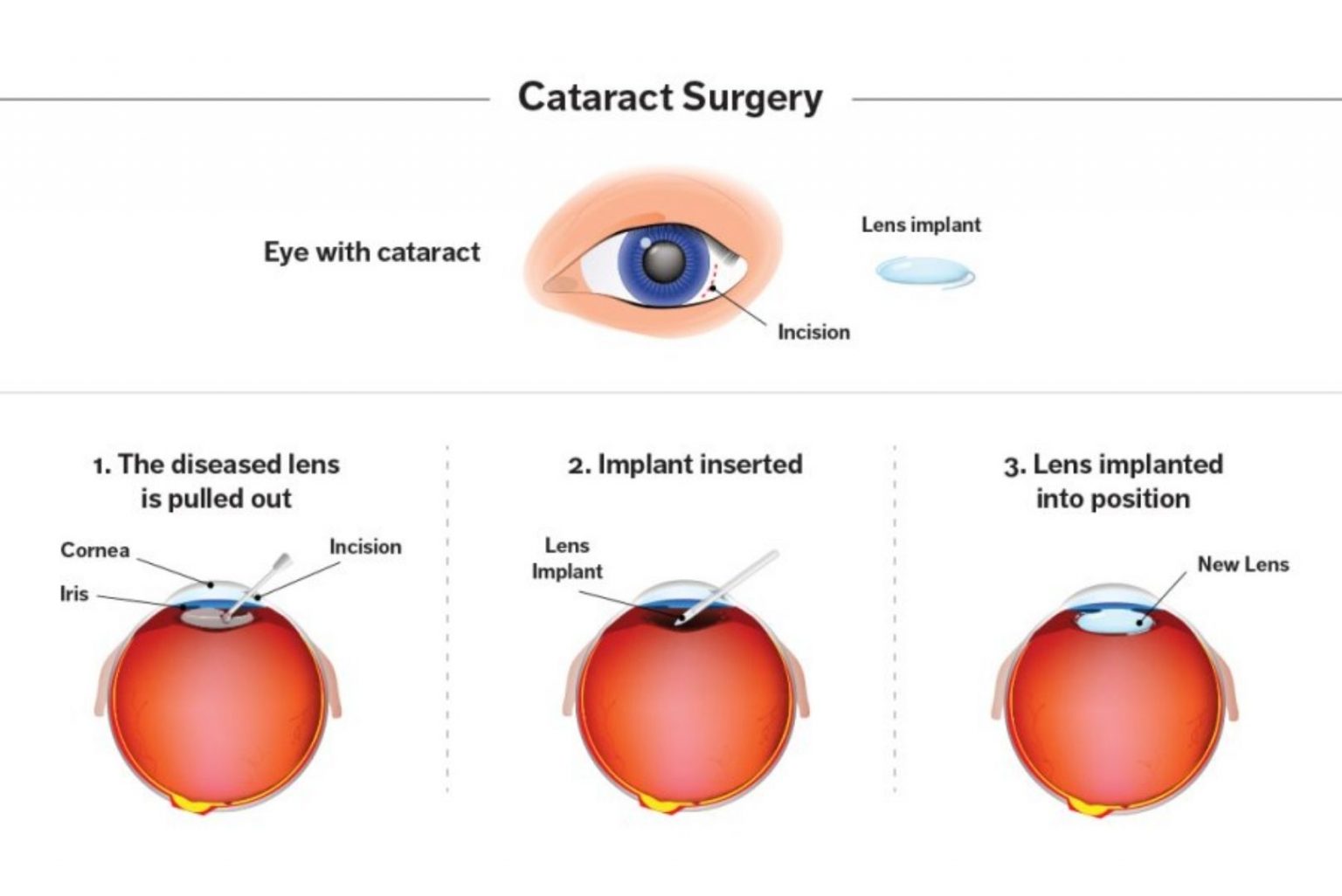
EVERYTHING YOU NEED TO KNOW ABOUT CATARACT! OPHTHALMOLOGY
IV-free sedation may help anxious cataract patients. Cataract surgery with or without intravenous sedation can be a factor in the clinical experience. Moving to sublingual sedation may be the next step in safety and comfort for a demanding patient demographic. Cataract surgery with or without intravenous sedation can be a factor in the clinical.
:max_bytes(150000):strip_icc()/laser_eye_surgery-a7551adb99784add9e388179cc68b3c7.jpg)
Laser Surgery for Cataracts Prep, Recovery, LongTerm Care
The majority of cataract surgeries done in the US are done with IV sedation and any combination of local anesthesia methods. Local anesthesia numbs the eye with either an injection around the eye or anesthetic drops placed on the eye. It's often combined with an injection into the front of the eye itself at the very beginning of the surgery.

Cataract Surgery & Sedation Cataract Patients
However, it seems that there will always be a proportion of patients who require sedation for cataract surgery.. In a study comparing oral diazepam 2.5-5.0 mg given 30 min pre-operatively with intravenous midazolam 0.5-1.0 mg given immediately preceding cataract surgery performed under topical anaesthesia,.

Why Do I See Lines in My Vision After Cataract Surgery? » Eye Surgery Guide
Cataract surgery is an outpatient process that typically improves vision. The procedure lasts less than an hour and involves numbing your eye with lidocaine and administering sedative medication; your doctor will discuss all available sedative options to select one which suits you. Your surgeon may use drops or injectable blocks to numb your.
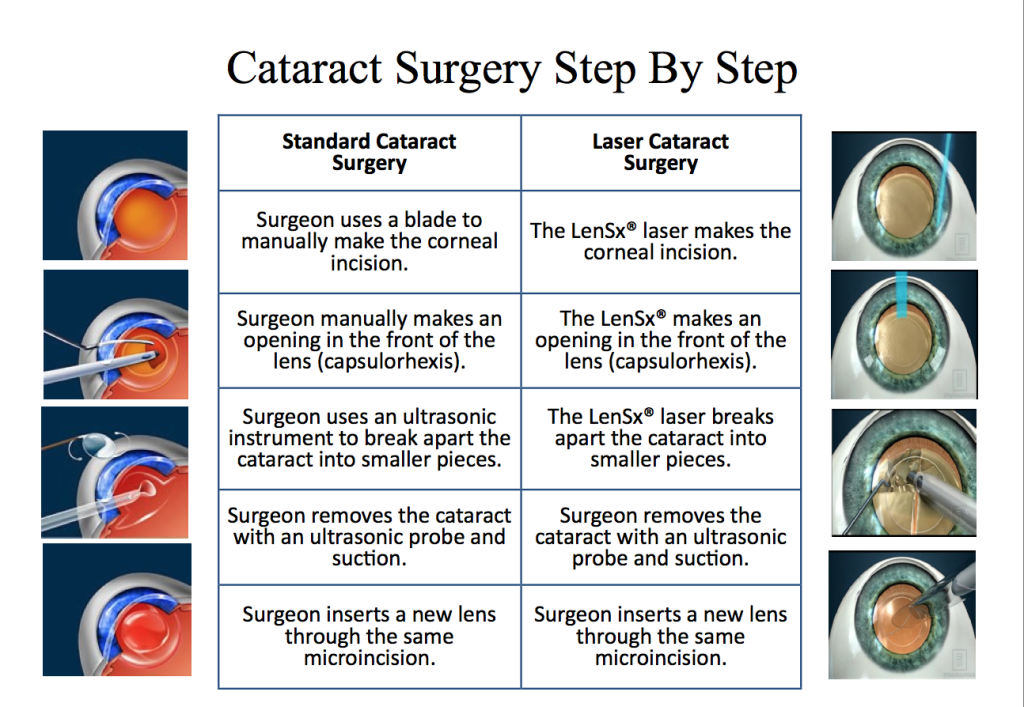
About Cataract Surgery Gailey Eye Clinic
Typically, patients are awake during cataract surgery. This eliminates risks associated with general anesthesia (where you are "put to sleep") and enables Our Doctors to communicate with you during your procedure. You will be given an oral medication prior to the procedure to help you relax during your surgery.
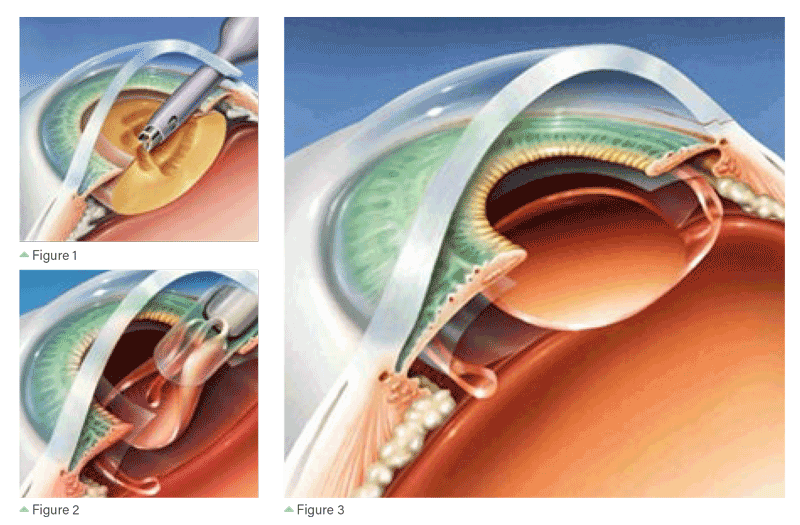
Cataract Surgery Guide Causes, Treatment, IOLs KindSIGHT
In most cases, patients are given local anesthesia, which means that they are awake during the procedure and fully conscious of what is happening. Local anesthesia helps render the operation virtually painless, so patients don't feel anything during surgery. Cataract surgery can be done in around 15 minutes. It is considered a routine form of.
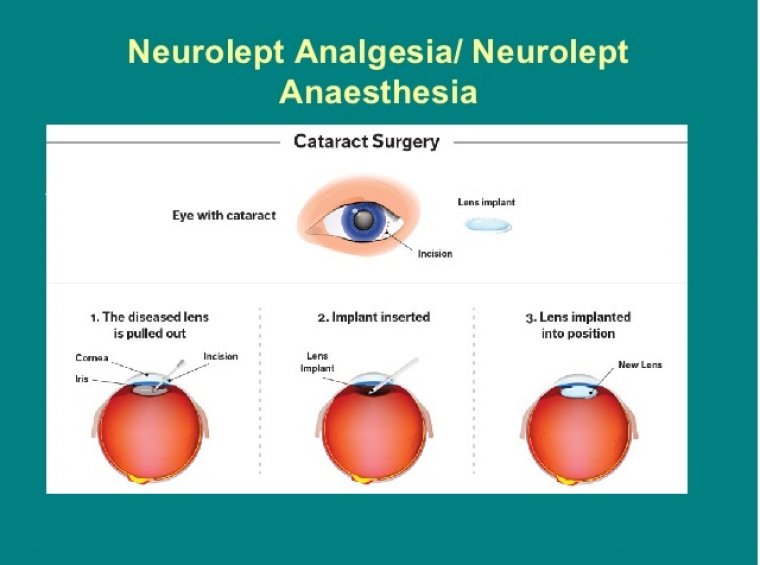
Cataract Surgery & Sedation Cataract Patients
Given the recent trend toward the use of topical anesthesia, perhaps of more significance would be a comparison of retrobulbar and topical anesthesia for cataract surgery. In 1993, Kershner evaluated 100 patents undergoing cataract surgery with topical anesthesia and concluded that topical anesthesia was safe, decreased complication rates, and.